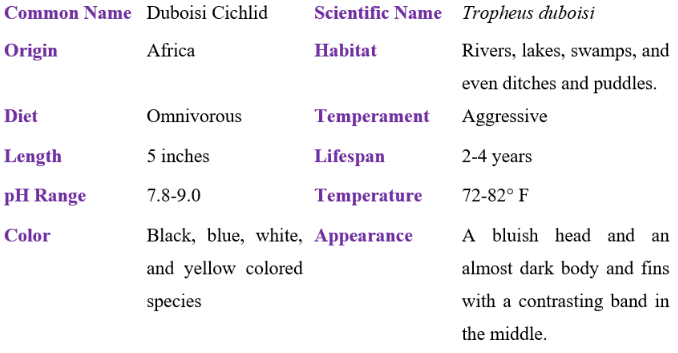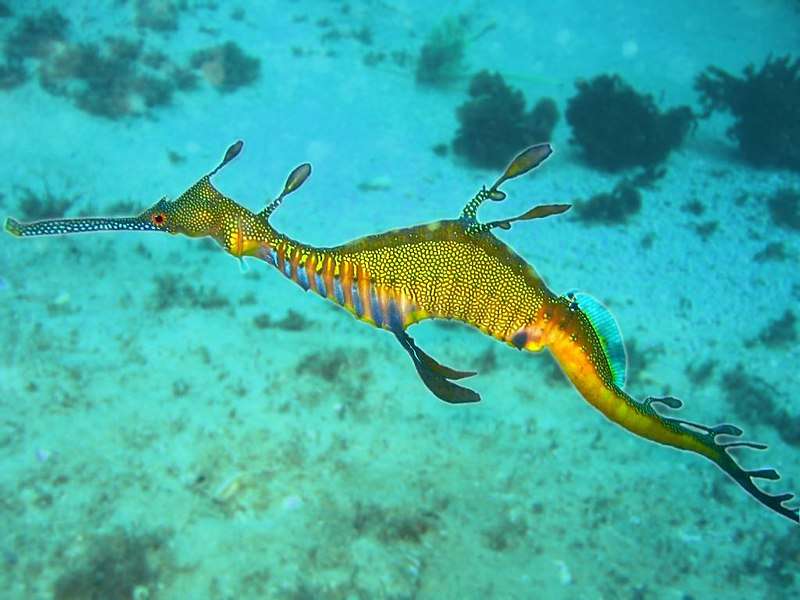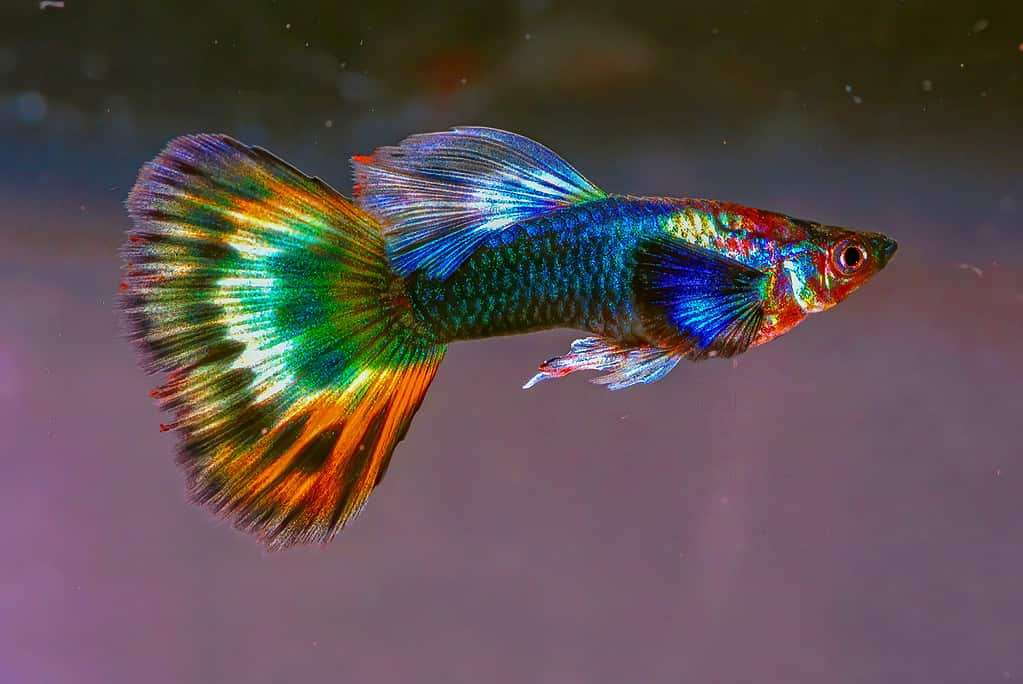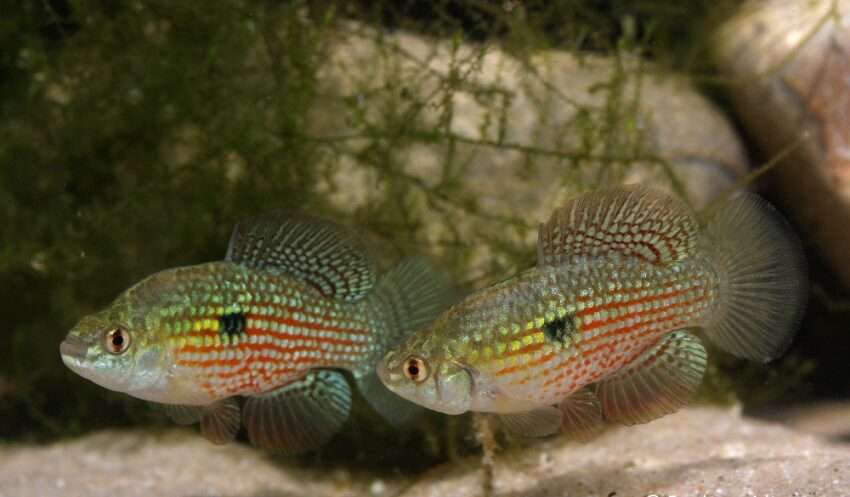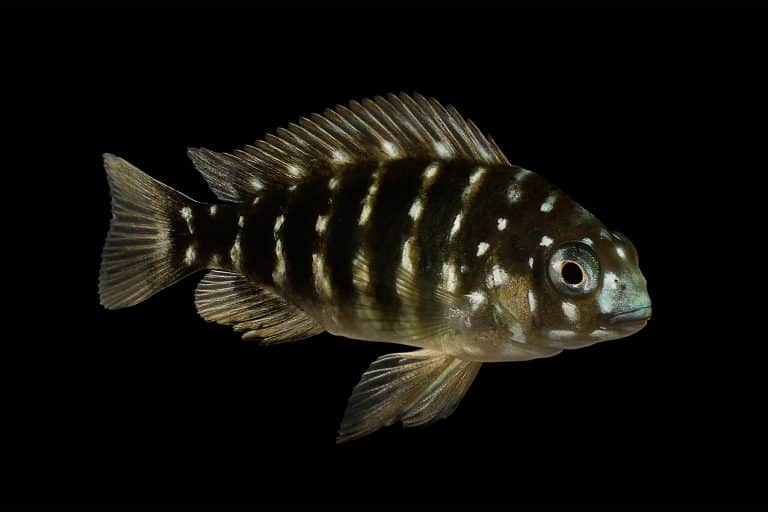
Size
Adults can reach a height of 5 inches.
Physical Characteristics and Behavior
Duboisi Cichlids are an intriguing and peculiar species of freshwater fish, distinguished by a stocky body, a large head, and a fan-shaped caudal fin. Juvenile duboisi have dark black bodies with vertical rows of bluish-white markings. They age and develop different colors. A mature Duboisi loses its markings, turns its head a deep blue color, and develops a noticeable yellow band around its pectoral fins. Despite being stunning, this fish is known for being aggressive and requires a particular environment with at least six others of its sort. Alongside Dubois cichlids, smaller, semi-aggressive Tanganyikan or Malawi cichlids might be kept.
Habitat
Tropheus duboisi can be seen grazing in deeper water than their brethren on the rocky beaches of Lake Tanganyika. Tropheus duboisi is a tropical species that thrives in water with a pH of 7.8 and 9.0, a hardness of 10 to 20, and a temperature of 72 to 82 degrees Fahrenheit.
Guide for Keeping as Pet
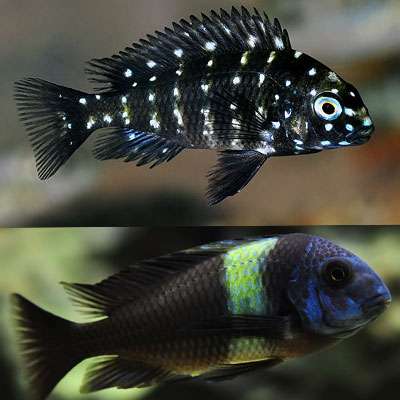
- Tank setup and care
Setting up their tank properly is vital before bringing Tropheus Duboisi home. One of the oldest freshwater lakes in the world, Lake Tanganyika, is home to these fish. It’s also important to keep in mind that caring for these creatures is not for everyone. They are a difficult species for beginners to raise since they are aggressive fish that are extremely sensitive to African Bloat (Malawi Bloat), unlike other cichlids.
In order to keep their mood in check, it is crucial to maintain the proper tank conditions and water parameters. Here are some recommendations to keep in mind when putting Duboisi Cichlids in your aquarium.
- Tank Size
Due to their hostility and preference for swimming around in the tank, these fish are quite active, therefore you should never place them in a tiny aquarium. For a large party of 12 or more people with just one adult man, a minimum 75 gallon tank (48′′ x 18′′ x 21′′) is advised. A tank that is at least 125 gallons (72 inches by 18 inches by 21 inches) is required if you intend to have more than one male in it. It is advisable to keep these species in a large space where they can swim and have access to a sufficient number of hiding places due to their aggressive attitude and individual characteristics.
- Decoration with Plants and Substrate
Include lots of rocks and African driftwood in the decor (plants and substrate) so Duboisi Cichlids can create caves and find appropriate hiding places. A sandy aragonite bottom should be added by fishkeepers to preserve the water’s pH and alkalinity at the proper levels. A sand-based substrate will also work. For the Tropheus Duboisi aquarium, live plants are not necessary, and their aggressive attitude makes them potentially dangerous. However, if you want to improve the aesthetics of your tank and increase the chances that the fry will survive, you can add artificial plants with strong roots. To keep your tank oxygenated, we recommend adding air stones or other aerating decorations. Steer clear of overstocking, which can cause stress.
- Parameters of water
These cichlids require a strong filtration system and a lot of water movement because they are energetic swimmers. They struggle with erratic conditions or frequent water changes. To maintain water with minor, frequent changes, execute 15% twice weekly or 30% once weekly. Tropheus duboisi requires hard, alkaline water, however you must make sure the salinity is less than 10% of a typical saltwater tank. Keep them in an environment that is very oxygenated and ensure that the pH and nitrate levels in the water are kept at their ideal levels. To help them feel at ease, strictly adhere to the water specifications listed below.
- pH: 8.0 to 9.5
- Water temperature: 23 to 27 degrees Fahrenheit
- 8 to 25°H of hardness
- 0 ppm ammonia
- 0 ppm of nitrite
- 30 ppm of nitrate
- Diet
Although it is known that Duboisi cichlids are omnivore, they may also eat some herbivorous items. They are referred to as aufwuchs feeders in the wild habitat. They mostly eat stingy, resilient algae that has adhered to rocks and the microorganisms it supports. In an aquarium setting, you can give them spirulina flakes and pellet food. Additionally, fish keepers can include romaine or spinach in their diet and give their customers this nutrient-dense meal at least once every day. Add flake food, diets high in fiber, and moderate amounts of protein to their diet in addition to vegetable matter.
Table
